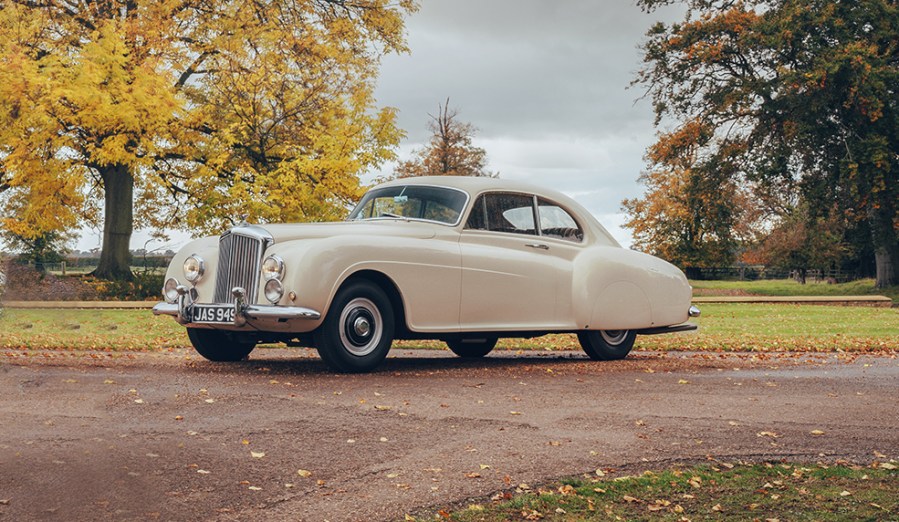We sample what was once the world’s fastest four-seater production saloon, the Bentley R-Type Continental.
Words: Paul Wager
Stepping out of a Bentley Flying Spur recently, I was struck by the thought that whatever you might think about the automotive choices of Premier League footballers, the Volkswagen Group has done a pretty effective job of returning Bentley to the spirit of its glory years.
The modern-day Spur is simply unique, its W12 engine providing a savage thrust the equal of pretty much no other large saloon, yet all delivered with impossible levels of refinement which makes you wonder why anybody would ever bother with a cramped, impractical supercar.
The general complexity of the modern cars may be light years away from the marque’s 1950s cars but there is a parallel between the modern-day Spur and the Bentley R-Type Continental we have here, since at launch it was quite simply the fastest four-seater luxury saloon in the world.
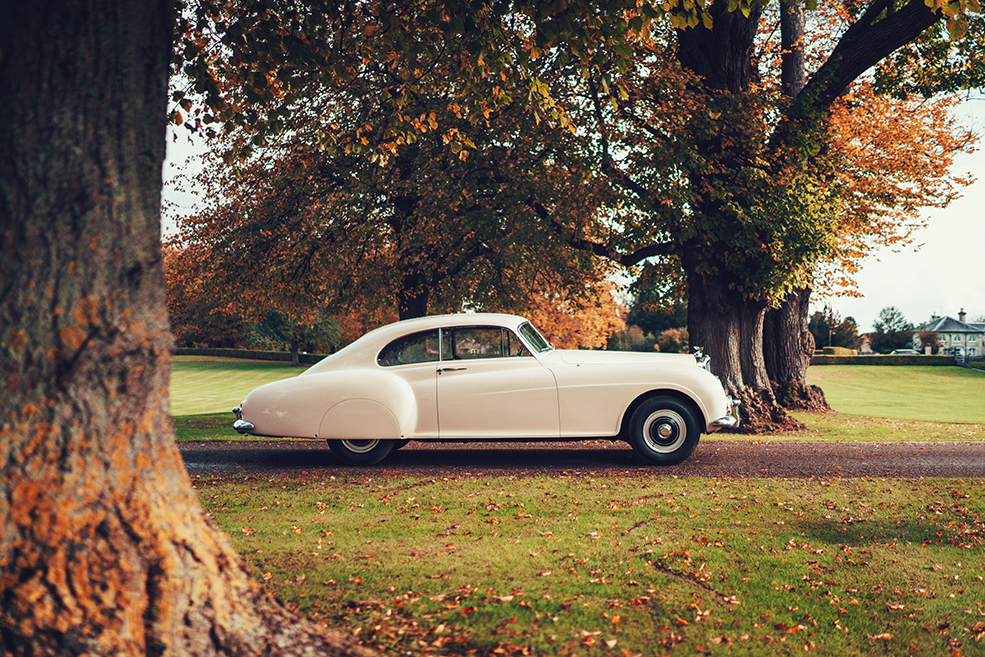
Basis of the car was, unsurprisingly, the R-Type which was essentially a facelifted version of the MkVI, itself the first new postwar Bentley model and the first to be factory-supplied with a standard body style rather than supplied as a chassis to be bodied by the buyer’s chosen coachbuilder.
The evolution from MkVI to MkVII (the R-Type’s original internal name) was little more than a facelift, the most notable feature of which was an enlarged boot. Indeed, the front end was all but identical to the later MkVI.
The R-Type was powered by the same alloy-headed straight-six found in the later MkVI cars, which meant 4566cc and 130bhp and in standard steel-bodied form made it a sprightly car by the standards of the day. An ‘F-head’ design, this used overhead inlet valves but sidevalve exhausts.

The Continental was first envisaged under the project name Corniche II in 1950 when Chief Project Engineer Ivan Evernden investigated the possibility of creating a MkVI car with increased performance without detracting from its legendary refinement. The company was no doubt stung into action following the reception of a small series of MkVI cars rebodied by Pininfarina at the request of the Parisian Bentley importer. Known as ‘Cresta’, they featured more flowing lines than the staid standard Bentley style and also featured a lowered steering column and a higher final drive ratio permitting more relaxed high-speed cruising on European routes.
There was a stronger economic impetus at work too: Prime Minister Stafford Cripps’ imposition of severe austerity measures included a hefty 66.66 per cent tax on luxury cars, meaning that the market for Bentleys was effectively overseas – meaning in turn a need to make cars which would appeal more to European and American tastes.
The following year John Blatchley arrived as styling chief and the two worked up a concept with flowing bodywork reminiscent of the prewar Embiricos Bentley project styled by Georges Paulin for Greek shipping tycoon and Bentley enthusiast André Embiricos.

The move to standard bodywork meant that the coachbuilding business was hit hard and the more enterprising began to look at ways of diversifying. One of these was H J Mulliner, long famed for its Rolls-Royce and Bentley work, which had developed a lightweight steel body construction technique. This used aluminium panels over a frame of Reynolds alloy tubes, with further weight saving achieved by using aluminium tubing for seat frames, bumpers and window frames.
It was for this reason that construction of the prototype was entrusted to Mulliner rather than the in-house coachbuilding division, Park Ward. Using a quarter-scale model in a wind tunnel, the design was honed to produce an aerodynamically efficient shape presenting a smaller frontal area than the regular Bentley saloons, with the steeply raked front screen and fastback rear all contributing to its slipperiness. Meanwhile, the distinctive finned rear wings were added to improve high-speed stability and improve resistance to side winds.
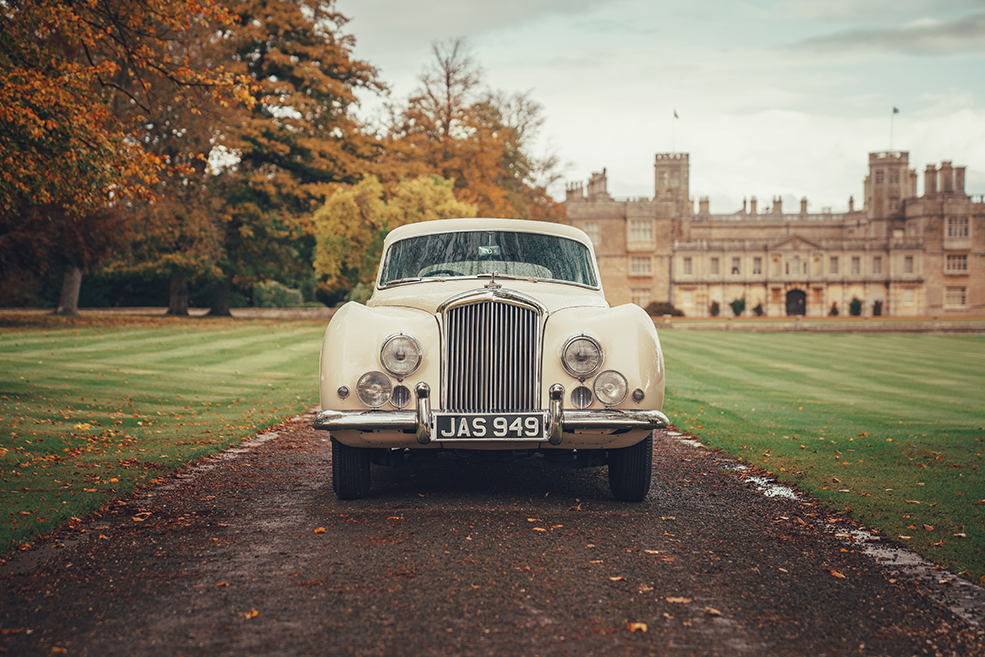
Marque historians suggest that the stylists wanted a streamlined front end but this would have been a step too far for conservative management and a compromise was reached which saw the traditional Bentley grille retained but lowered by 1.5 inches and raked backwards noticeably.
The brief for the car included a maximum weight of 34cwt (around 1700kg) and a top speed 20 per cent better than the regular MkVI which meant 120mph. Interestingly, although the requirement to keep the weight down obviously assisted the car’s acceleration, the overriding priority behind the brief was the tyre choice. Back in the early 1950s, the only tyres capable of sustained speeds of 115mph were restricted to a weight limit of 435kg per corner. This wasn’t a problem for the lightweight Jaguar XK120 which was the only other production car to achieve this kind of speed but was a pressing issue for the big Bentley.
The running gear was carried over from the MkVI but the Bentley R-Type Continental gained a high-efficiency exhaust system good for an extra 25bhp. The lowered steering column and raised final drive were copied from the Cresta cars and a prototype was built up in 1951.

Testing showed that the car topped out at 114mph with 500rpm still to go, the result being that the 2.79:1 final drive was lowered to 3.07:1, in which form the car was successfully tested to 120mph. An indication of just what a limiting factor the tyres were was that the speeds were recorded on Dunlop’s Medium Distance Track tyres, but the tyres fitted to regular production MkVIs lasted for just 20 miles.
Meanwhile, acceleration was similarly impressive for the period. The Bentley R-Type Continental was just 0.2 seconds quicker to 50mph than the standard MkVI but above that point began to show its mettle, reaching 100mph in 36 seconds – impossibly quick for 1951.
Testing complete, the car was launched as a production model in June 1952 and wowed the world with its ability to make 80mph in second gear and 100mph in third. It was also Britain’s most expensive production car, a theme which would be revisited with the 1990s Continental models.
In total, 207 production cars and a single prototype would be constructed, with the Continental’s appeal to overseas buyers making it a useful foreign currency earner.

This particular car – Bentley’s own heritage example – left the factory in 1953 and was ordered by a customer in Switzerland. Oddly though, it was specified in right-hand drive, since its owner Dr Rowland Guenin was later to take the car to Australia where it would spend most of its life before returning to Bentley in 2001.
Thanks to a life in a warm dry climate, the car has survived in beautifully original condition and has just the perfect amount of patina to let you know it’s not an over-restored static exhibit. Indeed, much like the Jaguar Heritage collection, Bentley Motors isn’t afraid to send the Continental out and about on classic events which is to the firm’s credit since it means the cars get seen in use.
Despite that, it’s a privilege to be allowed behind the wheel of such a significant (and valuable) car and despite its age, it still feels like something special. Simply opening the door shows you just how much care and craftsmanship went into creating these cars, with the door mechanism operating with the kind of precision other 1950s cars just don’t have.
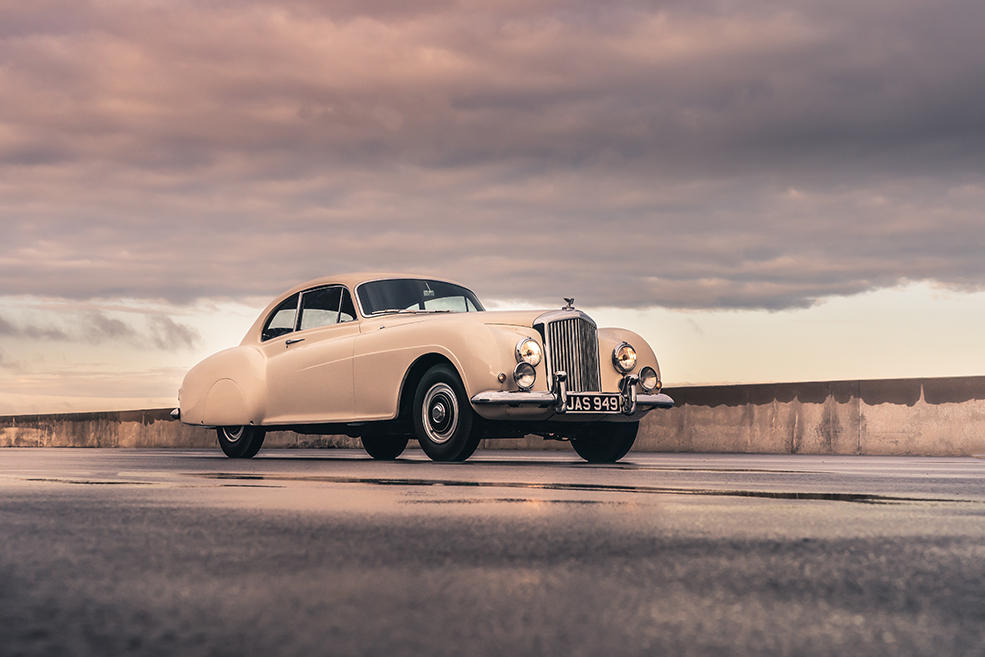
Being a later car, this ’53 Continental is reassuringly familiar since it needs only a turn of the key and stab of the starter button to fire the straight-six – earlier cars used a mixture control ring on the wheel, whereas these later models employed an automatic choke.
The Continental was known for having a different exhaust note from the regular MkVI and R-Type thanks to its performance system and it does sound more purposeful than the near-silent R-Type saloon.
This car is fitted with individual front seats, but to allow more legroom, the shift lever is on the right, which means regular Continental pilots get used to leaving it in second to allow easier entry and exit.
It takes a few minutes to get used to what your brain tells you is a left-hand drive gearshift in conjunction with a right-hand steering wheel but in all other respects the Continental is easy to drive.
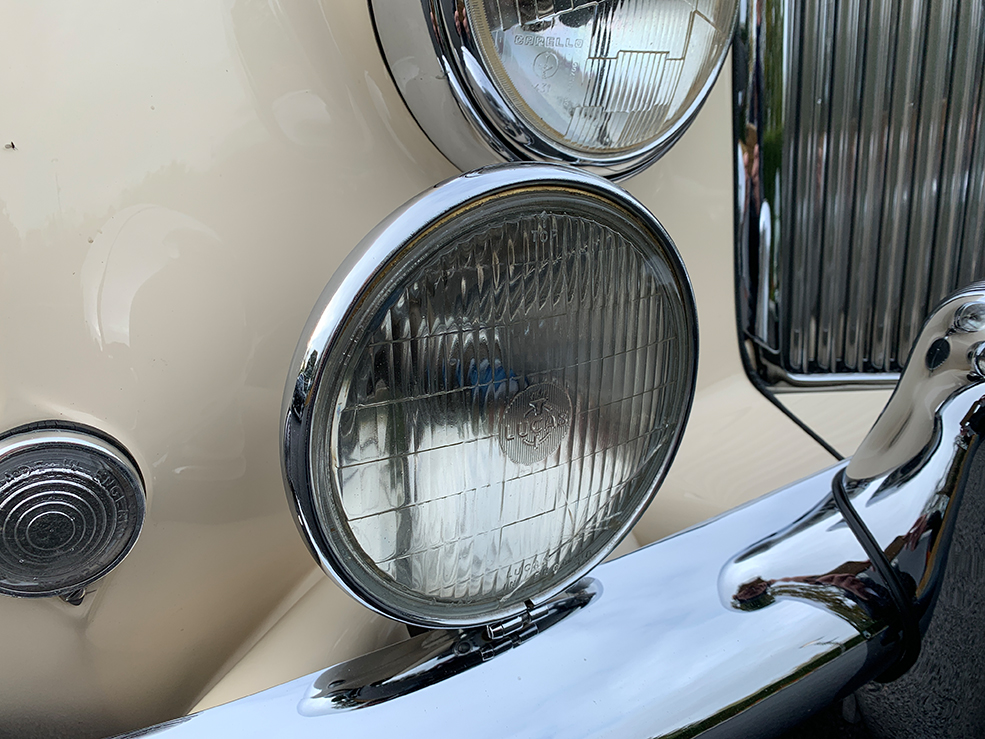
Despite the big wheel, the steering is heavy at walking speeds, but eases as soon as speed gathers, while the clutch and shift action all feel surprisingly modern. As we approach a cattle grid, I mentally adopt Morris Minor mode, remembering to double-declutch before selecting first on the move, something which gets a nod of approval from the Bentley custodian in the back seat.
Given the age and value of the car it’s the worst kind of savage who mashes the pedal into the carpet at the first opportunity, but it’s still tempting to see what she’ll do and the answer is plenty. The Bentley six-cylinder isn’t a revvy engine in the modern sense – peak power is at just 4000rpm – but it still feels lively considering its F-head layout and speed gathers surprisingly quickly.
And, it must be said, with surprising refinement. Back in the Fifties, cars with any kind of performance were generally hard-riding and uncompromising sports cars, yet even under hard acceleration it’s still possible to hold a civilised conversation in the Continental, the engine seldom more than a purposeful growl.
This car remains delightfully true to the original weight-saving ethos of the Continental, too which translates into a car which feels easy to handle despite its size. No, we didn’t explore the outer envelope of its grip nor can I tell you what the wind noise is like at 120mph, but I have no doubt that it would still manage that speed quite happily.

Tech Spec: Bentley R-Type Continental
Engine: 4566cc I6
Power: 153bhp @ 4,000rpm
0-60mph: 13.8 seconds
Top speed: 117mph
Economy: 25mpg
Length: 5.2m
Width: 1.8m
Weight: 1700kg
Feature first appeared in Classic Car Mart.

